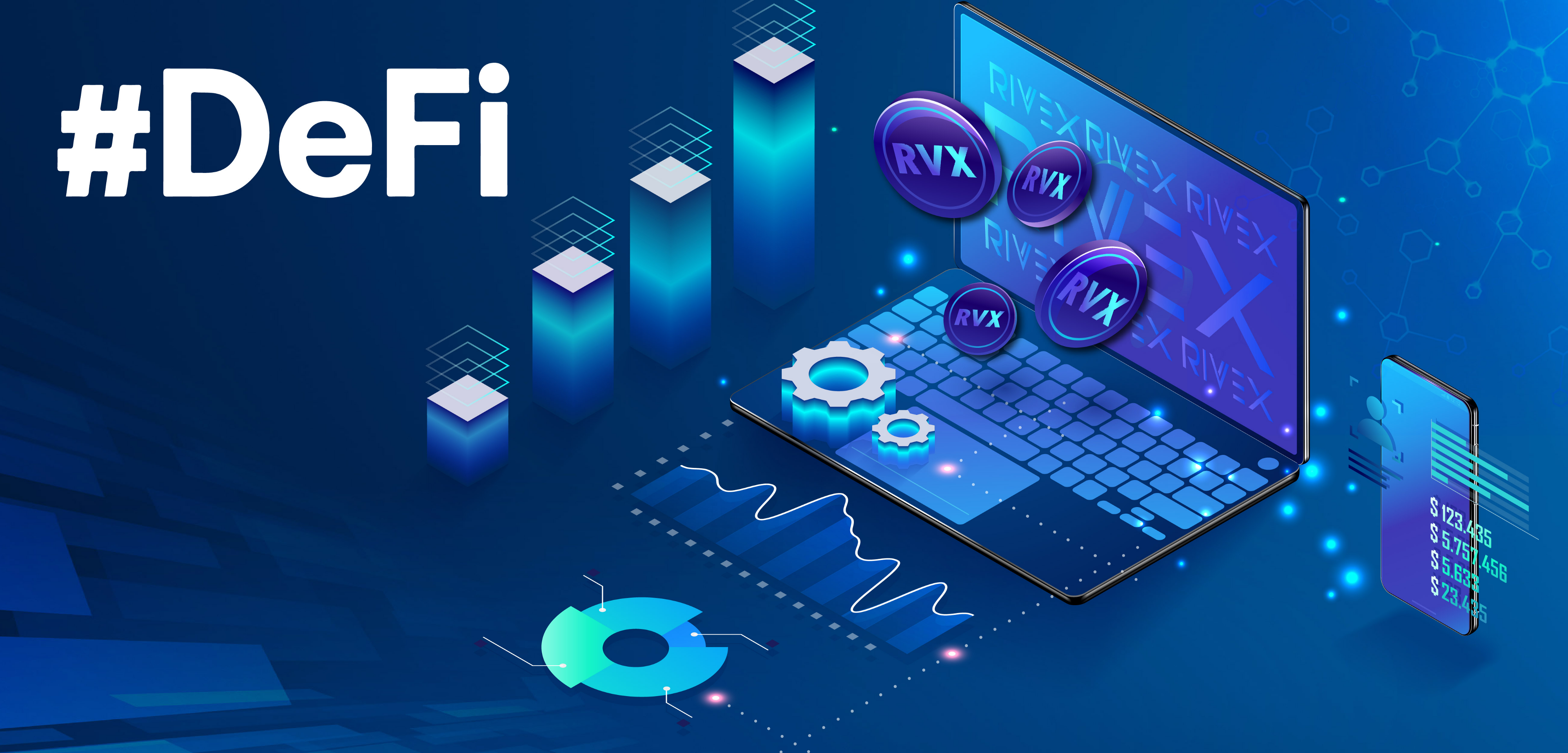Advantages of Decentralized Finance Protocols Creating More Applications
Even though Bitcoin has expanded significantly over the last 12 years, financial services have been reluctant to evolve. This is primarily due to Bitcoin's insecurity and the fact that few people use it. In addition, because Bitcoin's price fluctuates so dramatically, most financial institutions don't consider investing in it. As a result, Bitcoin has become a poor asset to invest in.
Decentralized finance (DeFi) is a current trend in the cryptocurrency ecosystem that is making a lot of impacts these days. If you don't know much about DeFi, let's dive into it and learn more about it.

What is DeFi?
DeFi is an acronym that stands for "decentralized finance." It is a term for a diverse set of public blockchain apps and projects that aspire to transform the way traditional finance operates.
DeFi refers to financial applications that use smart contracts built on blockchain technology. Smart contracts can carry out agreements automatically and without the involvement of a middleman. Anyone with an internet connection can access them.
DeFi is a collection of decentralized blockchain-based applications and peer-to-peer protocols. Access permissions are not necessary for easy lending, borrowing, or trading of financial instruments. Most DeFi apps currently running on the Ethereum network. However, new public networks that are faster, more secure, and less expensive are emerging.
DeFi Vs. Traditional Finance
Due to different regulatory elements, decentralized finance (DeFi) has a fundamentally different structure than traditional finance. There are several ways in which DeFi differs from traditional finance.
Independence
The DeFi ecosystem is self-sufficient since it lacks a governing body. The data is collected directly from the users and returned to them. A blockchain also encrypts and stores the data, making it unchangeable.
Data can be transferred from one DApp to another fast and effortlessly. A Blockchain development company can help you lay the foundation for these apps without human involvement. This allows you to make financial decisions without signing any papers or legal documentation.
Transparency
The Blockchain developer community can check the code for DeFi applications, identify errors, and report them. You can also view the activity on your account. Users' privacy is not jeopardized because all accounts are shown pseudonymous by default.
Availability
Anyone with internet access can use the DeFi application services. Decentralization is all about creating self-sufficient service resources.
Interoperable
DeFi apps can operate on various Blockchain frameworks and interact effectively with other DeFi apps.
What are DeFi Apps?
DeFi apps are the tools that enable the delivery of financial services using a decentralized network. These apps offer a public infrastructure that anyone can access without logging in.
DeFi apps allow users to exchange cryptocurrencies, borrow or lend money, purchase insurance plans, etc. These apps use smart contracts as a digital middleman to ensure that processes undergo completion correctly and quickly. They make use of blockchain technologies such as Ethereum and Stellar.
These apps differ from other banking apps in the sense that the majority of them can be used without the need for a central server. A smart contract system governs how users spend and transfers money.
Each application has its token for authentication. The DeFi apps have an open-source design, allowing developers full access to the source code and transparency. The best thing about decentralized finance is that these applications have no single point of failure. Anyone is free to build on top of the protocols.
Various Aspects of DeFi Apps
Different DeFi Apps categories serve different purposes. They include the following:
Borrowing and Lending
DeFi (Decentralized Finance) applications are similar to banks, which are centralized financial organizations. The only difference is that they run autonomously.
The purpose of DeFi is to help with problems that can occur while borrowing or lending money. For example, if you need to borrow $1000 but only have $500 on hand, you can use DeFi to borrow $500 worth of tokens or cryptocurrencies.
DEX (Decentralized Crypto Exchanges)
DEX is an abbreviation for "decentralized crypto exchanges." Users can trade cryptocurrencies on DEX without ever handing over their tokens to a central authority. Instead, most DEXs use smart contracts, which allow users to transfer tokens to a third-party address. The user can then trade these assets within the smart contract until they wish to withdraw them and put them in their wallet.
Margin trading
You can trade with borrowed money on many of the most popular decentralized exchanges (DEXs). Margin trading is risky but can also be profitable.
DeFi Protocols For Creating Applications
The following are the protocols and processes DeFi follows when creating an application:
Create a Token
The blockchain enables anyone to create their digital currency, an essential component of any financial system. As a result, we can create our crypto tokens for DeFi or combine them with other coins or tokens to buy, sell, or perform other financial activities.
Wallet Integration
Wallets enable DeFi programs to store private keys and use tokens for various purposes. Users can store money in their wallets and use them to buy and sell items on the Defi network. The wallet ensures that all transactions are legal and safe. Wallets also have direct access to browsers and app frameworks (MetaMask, TrustWallet, etc.).
Frontend Configuration
Users of DeFi communicate with one another via the applications’ frontend, which implicitly interacts with the backend APIs in the background. This platform ensures that an interface can allow Smart Contracts to access all of the DeFi app's features.
Smart Contracts
Smart contracts are collections of code that a user can execute to perform certain functions. This set of codes is in charge of determining how transactional requirements must be met. You can create guidelines for the best way to use your Defi App.
Backend Configuration
Smart contracts, once created, can be linked to your front-end directly or via a Backend API. The frontend and backend of the application are both incorporated into the Blockchain.
Benefits Of DeFi Protocols For Creating Applications
Yield Farming
Decentralized finance protocols (DeFi) offer the most profitable yield farming options right now. Anyone with a computer and an internet connection can use the blockchain to borrow and lend money reasonably in a DeFi world.
Wallet Creation
One of the easiest ways to demonstrate the importance of DeFi protocols is to show the wallet creation process. One of the major problems is that users do not have a compelling motive to use the service. However, wallet creation mitigates this problem. This is also an opportunity for developers to create new and useful tools for the Ethereum community.

